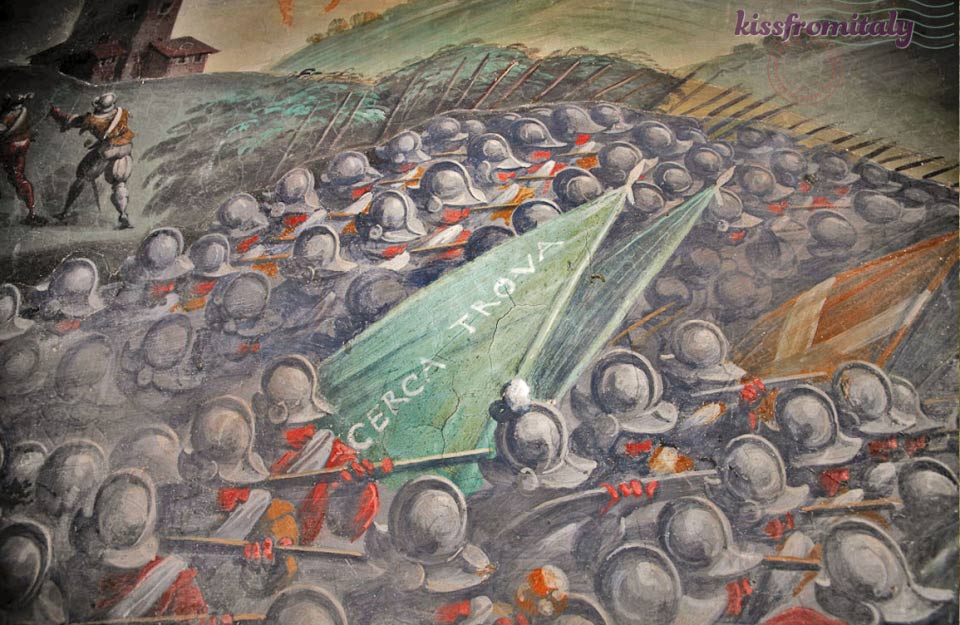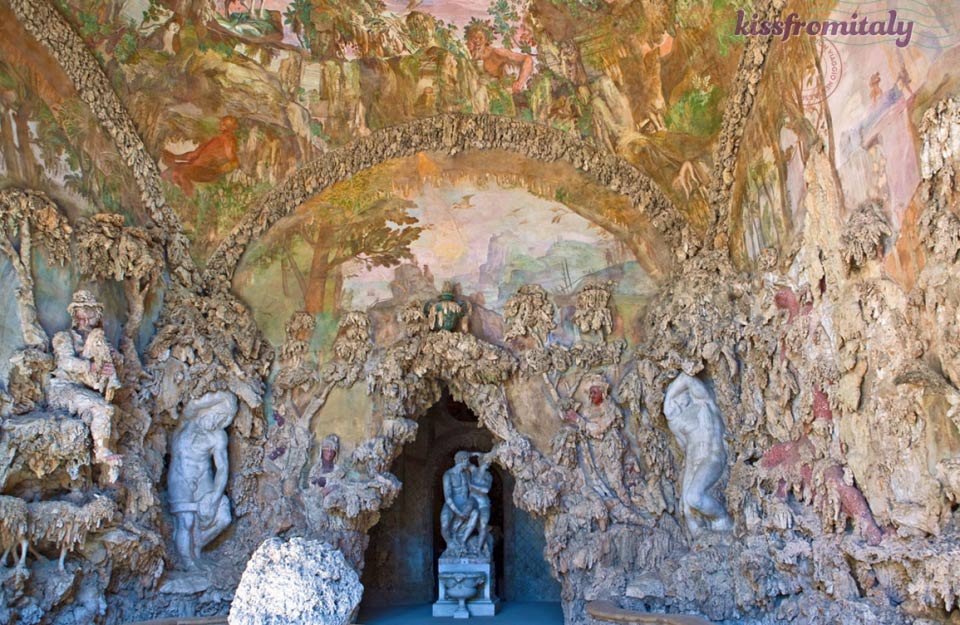
Follow Professor Langdon's path around Dante's Florence
Fans of Dan Brown's latest book The Inferno may be itching to get a glimpse of Florence through Professor Langdon's eyes! Follow our guide and you'll be sure to check off the most important locations in the exciting mystery novel. Andiamo!
Porta Romana
Langdon, and his partner Sienna, escape the hospital, after a strange awakening, begin their trek to the city center. To follow in his footsteps, start at Porta Romana, one of the few remaining old gates that led into the walled medieval city. Built for protective purposes in 1326, today these arches stand guard at the large roundabout where 6 major roads converge. At the center of the rotunda the contemporary statue Dietrofront by Michelangelo Pistoletto watches the traffic zoom around her. Quite out-of-place in this Renaissance city, the statue depicts two women: one facing away from the city and another balanced horizontally on her head. Let your attention drift to the right of the arch where a gate leads to a grassy park and the State Institute of art. This yellow edifice once served as the stables for the Pitti Palace. Brown mentions that the Medici commissioned this building, but it was actually the King of Italy who constructed it from 1865 to 1871 when Florence was the capital of Italy. If you pre-book, you can see some of the most important plaster casts of different Florentine sculptures.
Boboli Gardens
Langdon and Sienna continue their journey to the city center, climbing the wall near the Institute of Art into the Boboli gardens. For tourists, there’s a safer and legal method. Just to the right of Porta Romana’s arches, find the ‘back door’ to Boboli. Here, travelers can skip the line that that clogs the main entrance and head straight into the royal gardens.
In the 1500s, Niccolò Tribolo transformed the back-end of the Pitti Palace into a quite, tranquil paradise for the ruling Medici family. This is one of the first examples of the traditional Italian garden style, which later gained international fame. Elegant cypresses line cobblestone paths and statues pepper the landscape, while fountains and grottoes add an otherworldly touch. Although Langdon had to rush through the garden, take your time -- after all, it’s a lovely respite from the bustling city just outside the gates.
In The Inferno, Professor Langdon and Sienna head towards the Grotto del Buontalenti- a Mannerist mixture of painting, architecture and sculpture. Dangling stalactites, originally covered by moving water, and vegetation cover the three rooms of the grotto in an attempt to mimic a real cave. Frescos imitating nature cover the walls and Michelangelo’s Prisoners (now replicas) originally called this cave home.
Make sure you see all the sites Langdon mentioned: Braccio di Bartolo’s Fountain (the chubby dwarf riding a turtle!), la Cerchiata, Isolotto, the obelisk, and Fontana della Cipolla.
Gallery
Vasari Corridor
The Vasari Corridor was planned and built by Giorgio Vasari for Cosimo I de’Medici in 1565, and served as a safe passageway from government buildings to their private residence across the Arno River. Finally after decades, the corridor has been put back into action as Langdon and his sidekick Sienna sneak through this kilometer long hall.
This tunnel, collaged in paintings, is an art-lovers dream and can be visited with advanced booking. However, if you want to trace Langdon’s path, it’s enough to stay on the streets below and follow this architecture triumph. You can distinguish the corridor by its windows and follow it as it snakes from the Pitti Palace, to the Church of Santa Felicità, over the shops on the Ponte Vecchio, and along the archway lining the Arno before it meets the Uffizi. The corridor continues through the museum, allowing a safe passage to the nearby Palazzo Vecchio in Piazza della Signoria.
Palazzo Vecchio
Head over to Palazzo Vecchio, one of the must crucial locations in the book. The chase continues, and the pair stumbles upon several secret Medici passageways that allow them to zip around the large medieval palace. First stop: the Hall of Maps where Egnazio Danti and Stefano Buonsignori painted geographical maps in the late 1500s. When Cosimo I de’Medidi moved into the Palazzo, this became the Guardaroba (the place to store wardrobe and court properties). Behind the map of Armenia hides the hidden passageway that Langdon took. You’ll find that all the secret passageways in book exist, but their real history is even more scandalous than Brown’s depiction!
After the Hall of Maps, the protagonists sneak to the famed Hall of Cinquecento (Hall of the Five Hundred), that Savonarola had built to serve as a people’s council for over 500 participants. It’s here that Langdon comes to examine Vasari’s giant mural The Battle of Marciano that holds the famous phrase "cerva trova" in white lettering on a tiny green flag. Be warned, it’s hard to find! Hint: look at the upper right-hand corner.
While in the Palazzo, be sure to pass by Dante’s death mask (likely a replica) found in a hallway near an upper balcony over Vasari’s murals.
Dante’s Florence
The Professor and Sienna just escape the Palazzo though a small door leading to Via della Ninna, head through Piazza della Signoria and dash into the winding medieval streets of Florence. In a rush, they stop briefly at the bookshop at Museo Casa di Dante, the museum of Dante’s house. It’s true that records prove that Dante had lived in this location, but the edifice is simply a reconstruction carried out in the early 20th century. Nearby, visitors will find the small and simple Church of Dante. Legend says that it’s here where Dante first laid eyes on his beloved Beatrice Portinari at the young age of 9. Although there is a plaque dedicated to Beatrice, it’s unlikely that her remains are buried here, since she most likely is laid with in her husband’s family tomb (the tomb of Bardi).
The Baptistery and the Gates of Paradise
One of the most crucial moments of the novel takes place in this historic Baptistery. The Baptistry of San Giovanni is believed to be the oldest monument in Florence. Some documents date the structure back to 897, while local legend claims that its base has Roman roots from the year 310. The book’s heroes are lead here by the phrase "Paradise 25". They’ve come to examine the gilded bronze "Gates of Paradise" by Lorenzo Ghiberti. These intricate doors stand are over 15 feet tall, took 20 years to complete, and display 10 panels with biblical scenes. Admire the depth, three-dimensionality and dynamism of the realistic figures. These are a doubtless testament to the ingenuity and talent of Renaissance artists! Remember, these doors are a copy of the original. For security and environmental purposes, the real doors are houses in the nearby Opera del Duomo Museum.
Inside the Baptistery, glance up to admire the golden mosaic ceiling. Scan the golden images to see the stories of the various levels of Paradise- similar to Dante’s Divine Comedy. Dante, like all Florentine citizens until the last century, was baptized here. Make your way to the Baptismal Font. Readers of the book will recall that a vital discovery was found here that lead both Langdon and Sienna off to Venice!












